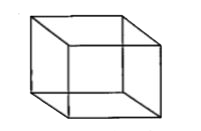Suppose we have a cube of 1.00cm length. It is cut in all three directions, so as to produce eight cubes, each 0.50cm on edge length. Then suppose these 0.50 cm cubes are each subdivided into eight cubes 0.25 cm on edge length, and so on. How many of these successive subdivisions are required before the cubes are reduced in size to colloidal dimensions of 100nm.
The correct Answer is:17
Step by step video, text & image solution for Suppose we have a cube of 1.00 cm length. It is cut in all three directions, so as to produce eight cubes, each 0.50 cm on edge length. Then suppose these 0.50 cm cubes are each subdivided into eight cubes 0.25 cm on edge length, and so on. How many of these successive subdivisions are required before the cubes are reduced in size to colloidal dimensions of 100 nm. by Chemistry experts to help you in doubts & scoring excellent marks in Class 12 exams.
Updated on:21/07/2023Topper's Solved these Questions
- SURFACE CHEMISTRY BOOK - AAKASH INSTITUTECHAPTER - SURFACE CHEMISTRY EXERCISE - Exercise
20 Videos
- SURFACE CHEMISTRY BOOK - AAKASH INSTITUTECHAPTER - SURFACE CHEMISTRY EXERCISE - Assignment Section - A (Objective type questions)
40 Videos
- SURFACE CHEMISTRY BOOK - AAKASH INSTITUTECHAPTER - SURFACE CHEMISTRY EXERCISE - ASSIGNMENT SECTION - I
5 Videos
- STRUCTURE OF ATOM BOOK - AAKASH INSTITUTECHAPTER - STRUCTURE OF ATOM EXERCISE - ASSIGNMENT ( SECTION -J) Aakash Challengers Questions
12 Videos
- TEST 1BOOK - AAKASH INSTITUTECHAPTER - TEST 1EXERCISE - EXAMPLE
111 Videos
Similar Questions
Suppose we have cube of 1.00 cm length. It is cut in all three directions, so as to produce eight cubes, each 0.50 cm on edge length. Then suppose these 0.50 cm cubes are each subdivided into eight cubes 0.25 cm on edge length, and so on. How many of these successive subdivisions are required before the cubes are reduced in size to colloidal dimensions of 100 nm.
View SolutionSuppose we have a cube of 1.00cm length. It is cut in all three directions, so as to produce eight cubes, each 0.50cm on edge length. Then suppose these 0.50 cm cubes are each subdivided into eight cubes 0.25 cm on edge length, and so on. How many of these successive subdivisions are required before the cubes are reduced in size to colloidal dimensions of 100nm.
View Solution
Knowledge Check
The area of a circle drawn with its diameter as the diagonal of a cube of side of length 1 cm each is :
A4π3 sq cmB3π2 sq cmC3π4 sq cmD2π3 sq cmA cube of edge 5 cm is cut into cubes each of edge of 1 cm. The ratio of the total surface area of one of the small cubes to that of the large cube is equal to :
A1:125B1:5C1:625D1:25A cube of edge 5 cm is cut into cubes each of edge of 1 cm. The ratio of the total surface area of one of the small cubes to that of the large cube is equal to :
A1:125B1:5C1:625D1:25
The sum of the lengths of all the edges of a cube is 60 cm, then the length of the edge of the cube is
View SolutionWhat is the surface area of a cube having an edge length of 1 cm? What would be the total surface area of the same material if it were subdivided into colloidal size cubes each having an edge length of 10−7 cm ?
View SolutionIf three cubes each of edge 4 cm are placed end to end, then the dimensions of resulting solild are:
View SolutionLittle Johny got a cube as a birthday gift. All the six faces of the cube are of different colours and each side of the cube is of 5 cm length. What is the capacity of the cube?

View SolutionA cube of side 10 cm encloses a charge of 0.1μC at its center. Calculate the number of lines of force through each face of the cube.
View Solution
